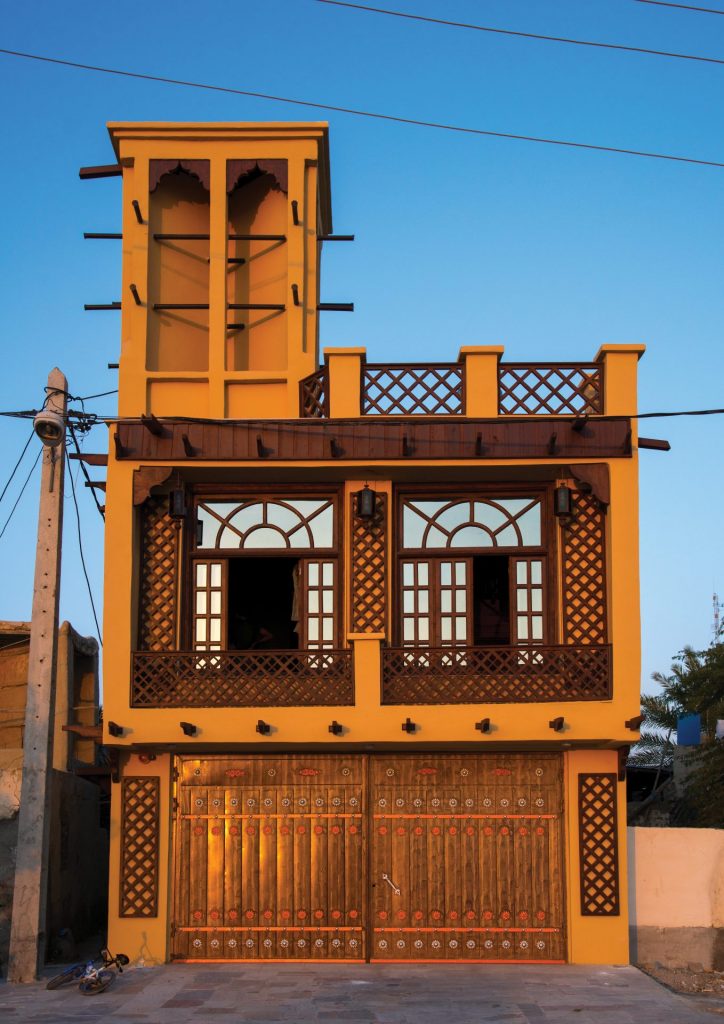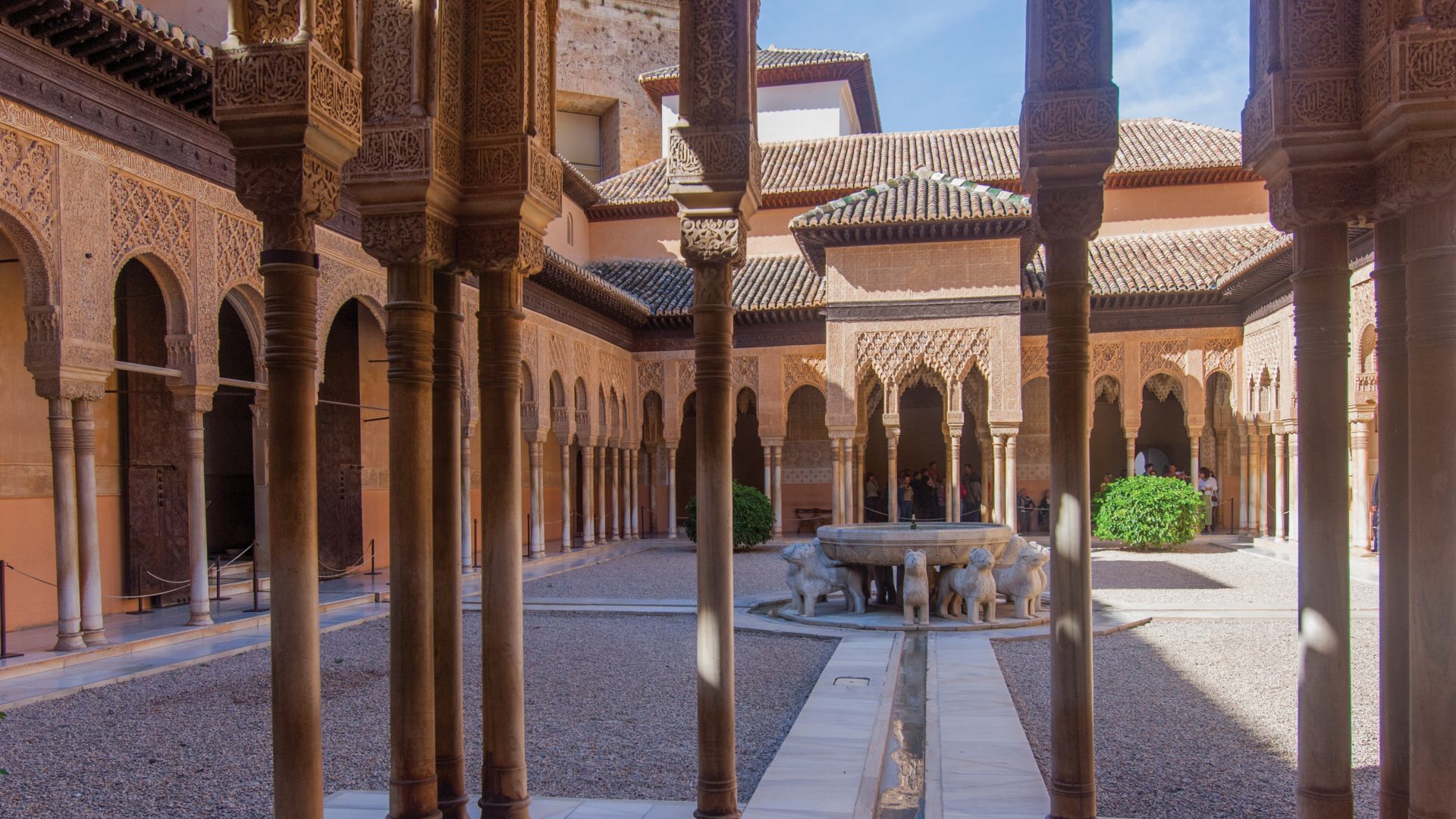The summer sun blazes down mercilessly on Seville. This part of Andalucía in southern Spain has been nicknamed “the frying pan of Europe” for some of the hottest temperatures on the continent. Climate change is making it even worse – this summer’s heatwave was so bad it was given a name, like a hurricane.
But in the cool narrow streets of the city’s historic quarters lie architectural responses to the problems posed by heatwave Zoe and its likely successors. Responses that were found in the hot deserts and arid settlements of the Middle East and Africa, and implemented here by the North African Moors who inhabited the Iberian peninsula and parts of southern France for more than 500 years.
Old Seville is a showcase for the heat-busting techniques of Moorish Islamic architecture that evolved to tackle extreme temperatures centuries before modern polluting trickery such as air conditioners were invented. Could the techniques and skills of those who built this city from the 8th century onwards come in handy again today, as the world’s climate changes dangerously?
“After the heatwave, suddenly everybody’s interested in this,” quips Cambridge University professor Wendy Pullan, who has published widely on Islamic architecture. “It’s not that simple, but I do think that there are certain principles that can be adapted to some extent. It’s certainly worth learning from the Middle East and Islamic cities.”
One feature that speaks to the climate crisis is the courtyard, an open-air inner sanctum kept cool by shading walls, plants and water. In nearby Córdoba, since 1918 an annual patios feria has celebrated the city’s numerous private open-air courtyards in a contest recognised by Unesco for protecting cultural patrimony. Seville still boasts a few – most strikingly the elaborate garden complexes of the Real Alcázar, resplendent with fountains and pools. When Spanish Christians retook the city in the 13th century (the reconquista, or reconquest, of Moorish Spain) and decided to replace the mosque with what would become the largest Gothic cathedral in the world, they left the courtyard intact.
They did well. Dating back thousands of years, when they were found in India, China, Egypt and Iran, courtyards form a focal point where families can gather, sheltering from the heat. The hard-floor surfaces are cool as the hot air rises. Water channels, fountains or shallow reflecting pools are common, and act not just to soften the heat but to provide a cool microclimate – they dissipate the heat and act as the lungs of the household.
Although mosque courtyards are often bare, the planted courtyard of the Great Mosque of Córdoba – close to Seville and once one of the most populous and influential cities in the world – is a spectacular exception, showing how combining the idea of the Muslim courtyard with enthusiastic gardening can be good for the climate and public heath. Córdoba’s Court of Oranges boasts lines of shady trees – at first palms, cypresses, olive trees, then orange trees, which were introduced to Europe by the Arabs – that mirror the sophisticated forest of columns inside. The tree-planting habit has spilled out into the streets of Andalucía, where urban trees help to reduce heat and pollution.
In sharp contrast to traditional Islamic buildings, most modern builds in the West are designed largely to keep out nature and natural phenomena – something that isn’t always to our advantage, creating environments dependent on artificial, energy-intensive temperature control, and the urban heat islands that made Londoners’ lives miserable during heatwaves.
Academic and architect Ahmadreza Foruzanmehr wrote in his book on Islamic architecture and heat, Thermal Comfort in Hot Dry Climates, that: “Vernacular buildings in hot and dry climates such as those of Iran set a harmony between dwellings, dwellers and the physical environment.” Made of locally available materials, employing local and mainly renewable sources of energy, and adopting practices favouring recycling and respect for nature, such buildings can reduce (by up to 60%) the energy needed for heating and cooling in houses: “a resource that has considerable potential for helping to understand the principles of sustainable design and construction.”
Foruzanmehr’s work focuses on traditional housing in Yazd, a pre-Islamic city in central Iran, where temperatures can range from 45C to below minus 15C. Built around courtyards sporting pools of water, beds of mixed planting and a surface slightly below street level, these dwellings also boast a windcatcher – a ventilation shaft, like an elaborate tower, projecting above the roof. This ingenious form of sustainable cooling technology uses openings on several sides to capture faster-moving air from above and transmit it indoors. Different pressures at roof and lower-room level means denser cool air caught by the windcatcher replaces the lighter, rising hot air inside. Unlike windows, windcatchers provide natural ventilation while avoiding direct sun. The most effective models reduced indoor air temperatures from 40C to less than 30C.
Using similar principles as the windcatcher is the mashrabiya – often an intricate wooden latticework panel with many small openings that allow cool air to enter and hot air to escape. Inextricable from the culture that created it, the mashrabiya also historically served to protect family privacy. The mashrabiya’s popularity reached its peak during the Ottoman empire, when they were used around a balcony-like protruding upper floor, or the loggia, which also provided shade for the floor below, but they can be found even in Europe today. Malta has several, and many remain in Moorish Spain – the Alhambra in Granada has several elegant examples. But the best known is modern – the filigree south façade of the Institut du Monde Arabe, built in the 1980s in the Latin Quarter of Paris.

Other cooling details abound in Moorish and other Islamic buildings. High, sometimes vaulted, ceilings; cool tiled floors, warmed in winter by carpets; small, high windows keeping the sun at bay; thick walls and flat roofs, where families would dry vegetables and fruit by day and sleep during summer nights for the breeze and lower temperatures elusive inside the house. Light outside wall colours reflect the sun and keep houses cooler, as do basements. But, as Pullan pointed out, it’s the sum of the parts that really counts.
“The ability to keep a city relatively cool depends very much on the planning of whole large areas as opposed to individual buildings,” Pullan told me. “If you look at the old part of Seville, you can very quickly see which is the Christian quarter as the streets go straight through. In the Islamic quarter the streets all seem to be cul-de-sacs – there’s a completely different spatial order to them.”
Through streets allow hot winds to dry everything in their path, while cul-de-sacs form barriers to the heat. And the density of houses built tightly together in narrow streets ensures few walls have exposure to direct sunlight.
Yet under globalisation the Middle East largely moved on from this kind of planning. Traditional builds are considered backwards, linked to underdevelopment and poverty, and incompatible with modern views of comfort, health and safety, amenities, performance and size. Wide, car-lined streets and tall concrete apartment blocks are now de rigueur, the traditional urban fabric is replaced with US-style urban sprawl and ugly high rises. Instead of windcatchers or cross-ventilation, there are air conditioners – Qatar is even using them in football stadiums during this year’s World Cup. Inefficient, energy-dependent and not smart in parts of the world where power cuts are legion and will get worse in the crisis sparked by Russia’s invasion of Ukraine.
But it’s unwise to import wholesale somewhere else’s architecture regardless of conditions – that goes both ways. Western architecture, with its sealed fortress homes surrounded by gardens, wide roads and aversion to terraces is almost the antithesis of the traditional architecture of hot countries. When I discussed this piece with a London architect, he warned: “You might find people are not so keen on small windows and courtyards on a freezing dark February afternoon in Britain.” Even small changes are hard to get introduced by reluctant housebuilders and officials. His recent attempt to build denser housing with narrower streets in the UK were thwarted by the requirement for car parking and through traffic.
This doesn’t mean Moorish architecture cannot serve as inspiration. Even the simple act of opening windows at different heights on different sides of the house can pull air through and create ventilation. With new builds, some elements can be incorporated – higher ceilings, for instance, and advanced insulation replacing thicker walls.
Some elements have already been adapted. Riwaq, Hellenic-inspired arcades and porticos built along one side of a street, can ensure outside shade everywhere. They were embraced across western Europe, particularly France and Renaissance Italy – the Ospedale degli Innocenti in Florence is among the many featuring stylish arcading. The German philosopher and cultural critic Walter Benjamin wrote a whole series of landmark essays about them.
Currently, a Norwegian company, Wind Catching Systems, is trying to raise funds for a giant, modern, floating version of windcatchers that would “catch” and convert wind to energy via a group of small turbines on a frame.
The 2019 RIBA Stirling prize-winning Goldsmith Street social housing project in the UK also shares some features with Islamic building – its 105 low-energy, high-density houses and flats are packed into less than a hectare of land near Norwich city centre, with a large shared communal space for social cohesion. The design that won the UK’s biggest prize for architecture – by London Studio Mikhail Riches – involves homes facing south to maximise solar gain, meeting standards set by the German-founded Passivhaus movement for energy–efficient buildings designed to heat and cool themselves, without climate-damaging outside intervention such as air-conditioning and central heating. All these principles overlap with Islamic architecture.
Unsurprisingly, some of this is in formerly Moorish Seville. After the Christian reconquista that saw Seville fall to Christians in 1248, many Moorish architects and builders stayed and helped to create a new hybrid style that mixes Islamic traits with Gothic, called Mudéjar. Incorporating iconic characteristics such as courtyards and cooling tiles, this style was used in some of the most feted parts of the Alcázar and in the 16th-century Casa de Pilatos, and its enduring appeal and usefulness meant it was revived in the early 20th century.
This may have been on the mind of the Danish architect Bjarke Ingels when he designed the European Commission’s new Joint Research Centre in Seville. Mixing new materials such as low-carbon concrete and recycled steel with traditional limestone and terracotta pottery, Ingels’ project includes a white dome with a solar porch – creating energy through solar panels, catching and recycling rainwater, and providing shade for the office building. Ingels spent part of his studies in Spain, looking at “white architecture” and Islamic buildings. Now both he and Seville’s Moorish architecture have come full circle, melding history with the city’s new decarbonisation plans, and perhaps showing a way forward for Seville and beyond.
“We have tried to create an architectural language that can be considered as a new vernacular architecture for Seville and Andalucía,” Ingels explained when revealing his designs four months ago. If it works as advertised and provides some solutions to climate change, it will be more than just Seville and Andalucía taking notice.




